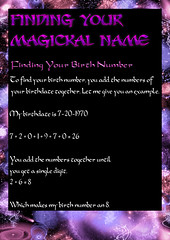An Overview of Wiccan Covens
Human beings polarize towards other human beings who share interests, are likeminded, have similar philosophies and analogous beliefs. We define ourselves not only in isolation, but also in relation to others. Polarizing results in the formation of groups. The group creates a feeling of safety because of the common grounds shared. Members in a group often feel that they can rely on the other members and that they can be depended upon in return. The group dynamic creates a natural hierarchy in which each member functions in a way to make the group function properly.
This group hierarchy is common in most religious systems and certainly no exception in Wicca.
Wiccan groups are called covens. The word “Coven” or “covan” originated from the Scots about 1500AD, and describes any kind of gathering. In Wicca, the word “coven” describes a gathering of witches. The first noted use of the word coven, in the context of describing a gathering of witches, was at Isobel Gowdie’s heresy trial in 1662 when there was mention of a witches’ coven of 13 members.
The number of the members may vary, but anything above the number of two is called a coven. Ideally there will be thirteen coven members: six men and six women led by a High Priestess or a High Priest. This is rarely the case though. There are many male only and female only covens. There are also many more women practicing the craft than there are men, so chances of a 50/50 split, is remote. In addition, some traditions prefer having both a High Priestess and a Priest. All of this makes it rare to find a coven numbering thirteen exactly.
There is – in addition to being an esoteric belief -, also a practical consideration
Pages: 1 2
